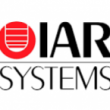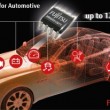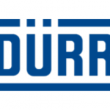

Finland has created the world’s first Mobility as a Service (MaaS) ecosystem for traffic, which will now be trialled also in the UK starting this month.
(more…)
June 23, 2017
Posted by: Avadhoot Patil

Connected devices or IoT seem to have become the de facto solution for any industry, today. An increase in connected devices leads to increase in the amount of data transferred, stored, computed, and consumed across networks and devices. (more…)
June 21, 2017
Posted by: Avadhoot Patil

Eagle Eye Networks, Inc. announced the acquisition of Panasonic Cloud Management Services Europe BV (PCMSEU) makers of Panasonic Cameramanager and Panasonic Nubo. (more…)
June 16, 2017
Posted by: Avadhoot Patil

Advances in communications and smart workplace technologies, combined with emerging lifestyle trends, point to a future workforce that is more mobile, more productive, and more capable than ever before. (more…)
June 14, 2017
Posted by: Avadhoot Patil

The functional safety edition of IAR Embedded Workbench for Renesas’ RH850 Family is certified according to IEC 61508, ISO 26262 and EN 50128, delivering qualified tools, simplified validation and guaranteed support through the product life cycle. (more…)
June 12, 2017
Posted by: Avadhoot Patil

At the Internet of Things (IoT) World 2017, Silver Spring Networks, Inc. announced the extension of its developer programme with the introduction of a new developer portal, developer kits and a simulation tool for application development. (more…)
May 17, 2017
Posted by: Avadhoot Patil

Cisco, has announced its intent to acquire MindMeld Inc., a privately held artificial intelligence (AI) company based in San Francisco. MindMeld has pioneered the development of a unique AI platform that enables customers to build intelligent and human-like conversational interfaces for any application or device. (more…)
Posted by: Avadhoot Patil

Inc Magazine recently reported 2017 as the “year of artificial intelligence” – the catalyst year that stands to kick-start it all. (more…)
May 16, 2017
Posted by: Avadhoot Patil

Fujitsu Electronics Europe (FEEU) has launched a second high temperature FRAM MB85RS128TY. This 128kbit Ferroelectric Random Access Memory (FRAM) device is designed for an operating temperature of up to 125°C and is qualified according to AEC Q100 industrial standard. (more…)
May 15, 2017
Posted by: Avadhoot Patil

Dürr AG and Software AG have entered into a strategic partnership to develop new Internet of Things (IoT) and Industry 4.0 solutions. Dürr’s new cloud-ready IoT platform will include best-of-breed digital solutions, technologies and applications from iTAC Software AG – the company’s IoT software subsidiary – (more…)
April 26, 2017
Posted by: Avadhoot Patil